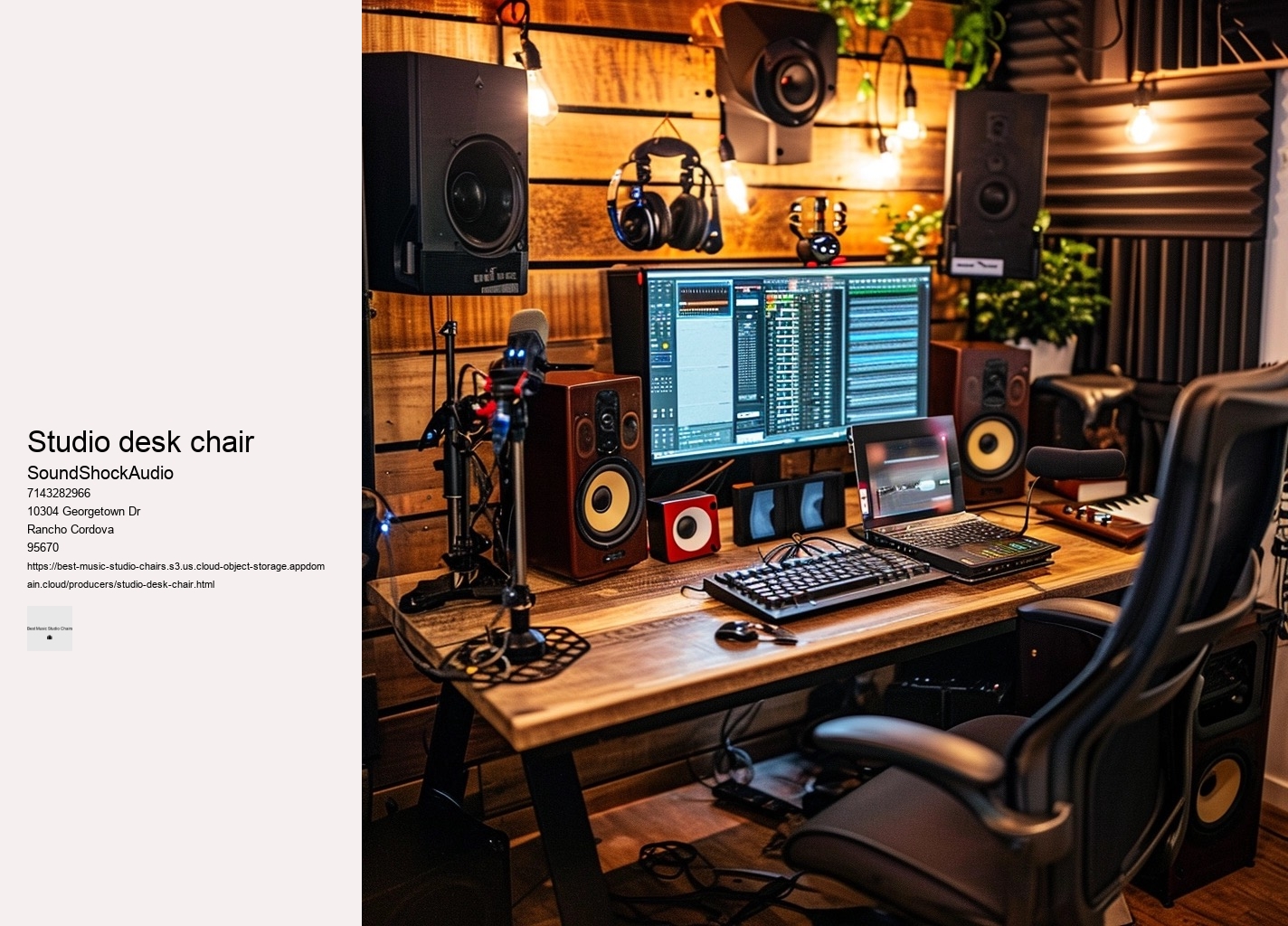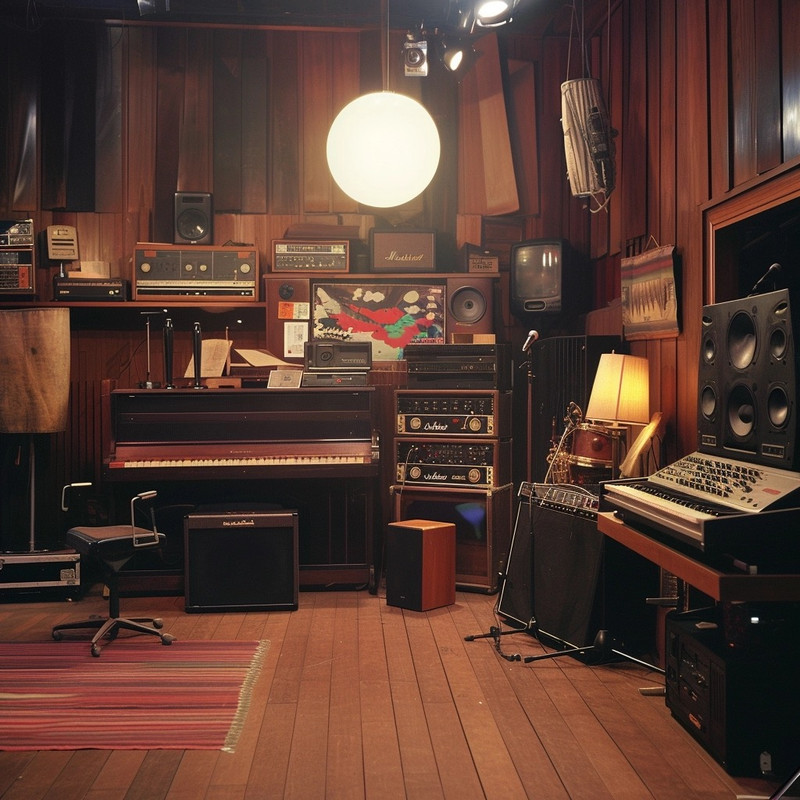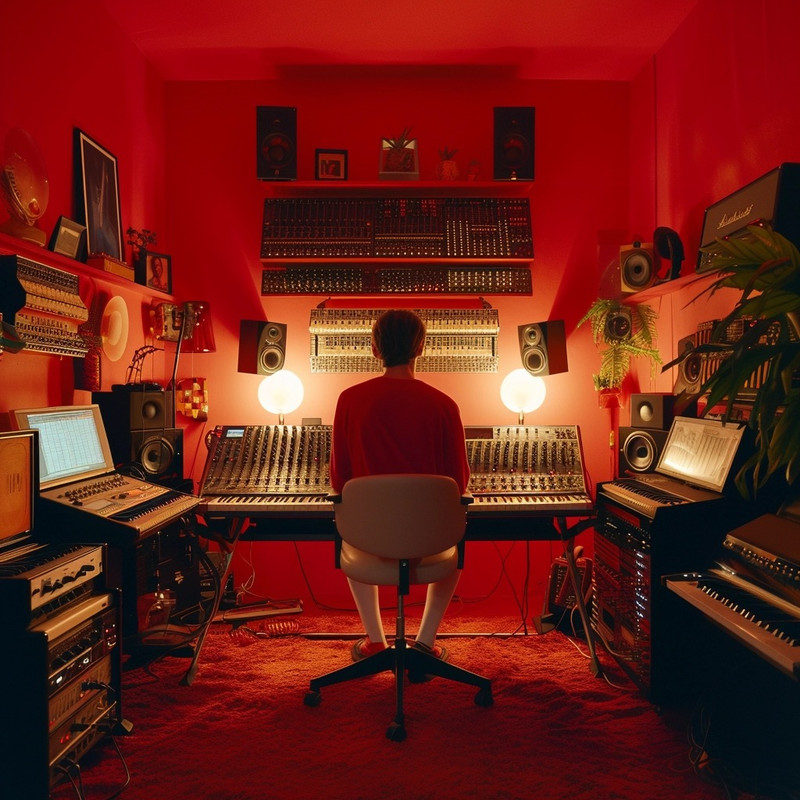

By integrating these strategies into your daily routine alongside using an ergonomic chair, you create an environment conducive to sustained productivity without succumbing to exhaustion's grip. While aesthetic preferences evolve rapidly within creative fields, investing in timeless craftsmanship ensures that a top studio chair remains both functional and stylish across eras. At first glance, one might consider a studio chair simply as a vessel for seated support during long hours of work.
Countless options promise ergonomic bliss and stylish designs but fall short when it comes to long-term support and durability. In specialty markets, chairs like Secretlab's Titan series cater explicitly to users who require exceptional stability alongside customizable features such as adjustable lumbar support pillows and 4D armrests – perfect for tailoring to one’s individual needs during long mixing or editing periods.
But what makes a studio chair essential for prolonged mix downs? They say silence speaks volumes; here it underlines productivity free from unnecessary interruption—a testament to thoughtful design embracing virtue of stealth.
These tactile choices are paramount in sustaining focus when external conditions fluctuate with whimsical abandon. Ergonomics is paramount; after all, what good is a chair if it cannot provide comfort over extended periods?
This breathability helps to regulate temperature, preventing the chair from becoming too warm after prolonged sitting—a common complaint with many padded chairs. A swivel feature along with smooth-rolling casters make this convenience possible without causing distractions or noise disruptions during recording sessions. The chair in which one sits while producing music may seem inconsequential at first glance; however, its impact on productivity and creativity is profound.
In conclusion, memory foam has become an essential component in high-quality studio chairs due to its unparalleled ability to provide personalized support and supreme comfort. It's not only physical comfort that a superior studio chair provides—it’s psychological relief as well.
Resourceful musicians could revamp an existing chair by adding cushions or making other modifications to enhance its comfort level without spending much money. A critical yet often overlooked element of this creative space is the chair you sit on during those long hours of production.
Renowned for its ergonomic design, this chair boasts an innovative suspension system that distributes weight evenly, reducing pressure points. These chairs offer adjustable features such as lumbar support that molds to the contours of your spine, armrests that align with your natural posture, and seat pans that encourage circulation even after hours of being seated.
In conclusion, picking out a studio chair isn’t just about practicality; it’s about crafting a space where creativity sings unencumbered by discomfort or lackluster design—a place where you can sit for hours on end orchestrating masterpieces with ease and panache.


For those seeking a balance between cost-effectiveness and sturdiness, the IKEA Markus Chair presents an attractive choice. Your workspace should inspire you; if vintage vibes spark your creativity opt for retro-inspired designs; if modern minimalism fuels you go for sleek lines and neutral colors. In contrast, extended periods of inactivity, especially in positions that strain particular muscle groups or impose unnatural postures, can lead to various health complications.
Imagine a chair—an ordinary concept turned extraordinary by ergonomic wizardry—a throne for sound architects tirelessly weaving sonic tapestries through night's quiet hours. Ergonomics play a pivotal role when selecting a studio chair.
Investment in a high-quality studio chair is indeed investment in oneself – acknowledging that comfort need not be sacrificed at creativity’s altar but instead can coexist synergistically within one’s sacred workspace. Creating a pain-free recording experience is often likened to an art form, one where sound engineers and artists alike strive for perfection.
The adjustable armrests cater to various instrument playing heights, providing essential support for shoulders and arms. Another significant feature is lumbar support adjustability.
Investing in an ergonomic chair is a statement: you value yourself and take your craft seriously enough to provide the best tools available. This subtle shift in mindset can trigger a cascade of motivation and confidence that permeates through every project you tackle. When exploring the vast realm of creativity, it might seem peculiar to consider that something as mundane as your seating choice could significantly impact your artistic endeavors.
The significance of comfort in such a setting cannot be overstated – it is paramount.

Mastering Marathon Mixes: How to Stay Comfortable with Top-Rated Studio ChairsWhen embarking on the arduous journey of mastering marathon mixes, comfort can often be the unsung hero that either propels you to new heights or leads to your downfall. The material clothing the chair demands thoughtful consideration.
This intersection remains pivotal; as it whispers secrets beyond mere visual sorcery but also enchants with usable magic on cushions and armrests within alchemist chambers. To truly beat fatigue and boost productivity, consider adopting these best practices:1.
DJs get paid so much because they play a crucial role in the entertainment industry, creating and controlling the atmosphere at clubs, parties, and events. Their ability to engage and energize a crowd, combined with the skill required to mix tracks seamlessly, adds significant value to any event. Additionally, top DJs have a strong following and can draw large crowds, which translates to higher ticket sales and revenue for event organizers.
Yes, EDM (Electronic Dance Music) artists can make significant amounts of money through various channels such as live performances, music sales, streaming royalties, merchandise sales, and brand endorsements. The most successful EDM artists earn millions of dollars annually, especially those who headline major festivals, have hit tracks, or maintain residencies at popular clubs. However, like in any music genre, income can vary widely depending on an artist's popularity, the deals they secure, and how well they manage their career.
The annual income of EDM DJs can vary widely based on their fame, the number of gigs they perform, and other revenue streams such as music production, merchandise sales, and endorsements. Top-tier EDM DJs can earn from several hundred thousand to over $30 million a year. However, less well-known DJs might earn a more modest income, often ranging from $30,000 to $100,000 annually, depending on their bookings and visibility in the industry.
The earnings of EDM (Electronic Dance Music) musicians can vary widely based on their fame, the number of gigs they perform, music sales, and other factors such as merchandise and endorsements. Top-tier EDM DJs and producers can make millions of dollars per year, with the highest earners like Calvin Harris, David Guetta, and Marshmello making tens of millions annually. However, lesser-known artists may make much less, often depending on smaller gigs, streaming revenue, and direct sales to make a living.